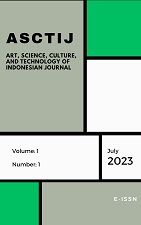Mapping Research of Culture Education Learning Media: A Bibliometric Analysis
Abstract
Full Text:
PDFReferences
T. T. De Back, A. M. Tinga, and M. M. Louwerse, “Learning in immersed collaborative virtual environments: design and implementation,” Interactive Learning Environments, pp. 1–19, Dec. 2021, doi: 10.1080/10494820.2021.2006238.
N. Donthu, S. Kumar, D. Mukherjee, N. Pandey, and W. M. Lim, “How to conduct a bibliometric analysis: An overview and guidelines,” J Bus Res, vol. 133, pp. 285–296, Sep. 2021, doi: 10.1016/j.jbusres.2021.04.070.
B. Rampton, Language in late modernity: Interaction in an Urban School. Cambridge University Press, 2006. doi: 10.1017/CBO9780511486722.
R. M. Bernard, E. Borokhovski, R. F. Schmid, R. M. Tamim, and P. C. Abrami, “A meta-analysis of blended learning and technology use in higher education: From the general to the applied,” J Comput High Educ, vol. 26, no. 1, pp. 87–122, 2014, doi: 10.1007/s12528-013-9077-3.
C. Greenhow and C. Lewin, “Social media and education: reconceptualizing the boundaries of formal and informal learning,” Learn Media Technol, vol. 41, no. 1, pp. 6–30, 2016, doi: 10.1080/17439884.2015.1064954.
J. M. Twenge, “Generational changes and their impact in the classroom: Teaching Generation Me,” Med Educ, vol. 43, no. 5, pp. 398–405, 2009, doi: 10.1111/j.1365-2923.2009.03310.x.
K. Basen-Engquist and G. S. Parcel, “Attitudes, Norms, and Self-Efficacy: A Model of Adolescents’ HIV-Related Sexual Risk Behavior,” Health Education & Behavior, vol. 19, no. 2, pp. 263–277, 1992, doi: 10.1177/109019819201900209.
J. McCarthy, “Blended learning environments: Using social networking sites to enhance the first year experience,” Australasian Journal of Educational Technology, vol. 26, no. 6, pp. 729–740, 2010, doi: 10.14742/ajet.1039.
E. G. Carayannis and D. F. J. Campbell, “Open Innovation Diplomacy and a 21st Century Fractal Research, Education and Innovation (FREIE) Ecosystem: Building on the Quadruple and Quintuple Helix Innovation Concepts and the ‘Mode 3’ Knowledge Production System,” Journal of the Knowledge Economy, vol. 2, no. 3, pp. 327–372, 2011, doi: 10.1007/s13132-011-0058-3.
S. Demetriadis et al., “Cultures in negotiation: Teachers’ acceptance/resistance attitudes considering the infusion of technology into schools,” Comput Educ, vol. 41, no. 1, pp. 19–37, 2003, doi: 10.1016/S0360-1315(03)00012-5.
D. C. Funk and T. J. Bruun, “The role of socio-psychological and culture-education motives in marketing international sport tourism: A cross-cultural perspective,” Tour Manag, vol. 28, no. 3, pp. 806–819, 2007, doi: 10.1016/j.tourman.2006.05.011.
A. E. Al Lily, A. F. Ismail, F. M. Abunasser, and R. H. Alhajhoj Alqahtani, “Distance education as a response to pandemics: Coronavirus and Arab culture,” Technol Soc, vol. 63, 2020, doi: 10.1016/j.techsoc.2020.101317.
DOI: https://doi.org/10.24821/asctij.v1i1.10173
Refbacks
- There are currently no refbacks.






D1.png)